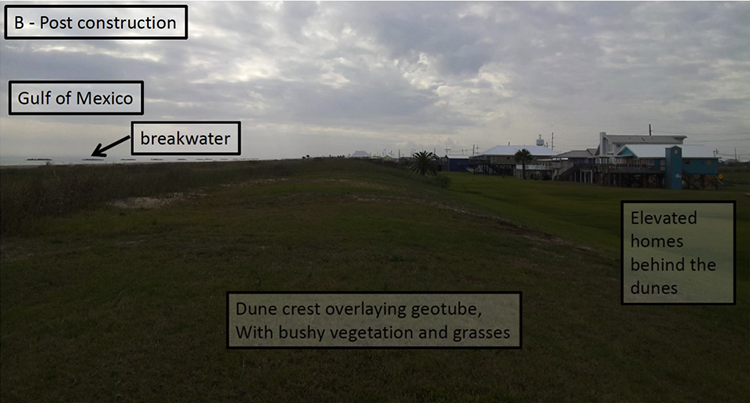Geosynthetics – Geotubes/Geotextiles
Case Study 3: Hurricane Protection in Grand Isle, Louisiana, USA
Geotextiles or geosynthetics have become very popular methods for several streambank stabilization projects, dune stabilization, and generally when earthen stability is required. A geotextile material that can be chosen varies in thickness and porosity and will depend largely on soil properties or whether it is necessary to improve a soil property – for instance, to increase surface soil strength, increase erosion resistance, or stabilize weak soils on steep slopes. For the case study in Grand Isle, LA, the objective was to protect the island from storm waves and storm surge, a function that is typical of a dune system. However, the island is highly exposed to the Gulf of Mexico storm waves that frequently overwash and erode the dune system, with increasing dune rebuilding costs after each storm. To protect against this erosion, coastal engineers employed geotubes, which were filled with native material excavated from the existing storm-damaged dune system. Once put in place, the tubes were covered with a top layer of sand and were vegetated for added soil stability. Over time, wind-blown sand from the beach system accumulates at the seaward side of the dune system and organizes into smaller dunes, where additional vegetation growth takes place and provides additional protection from waves and storm surges approaching the island.


